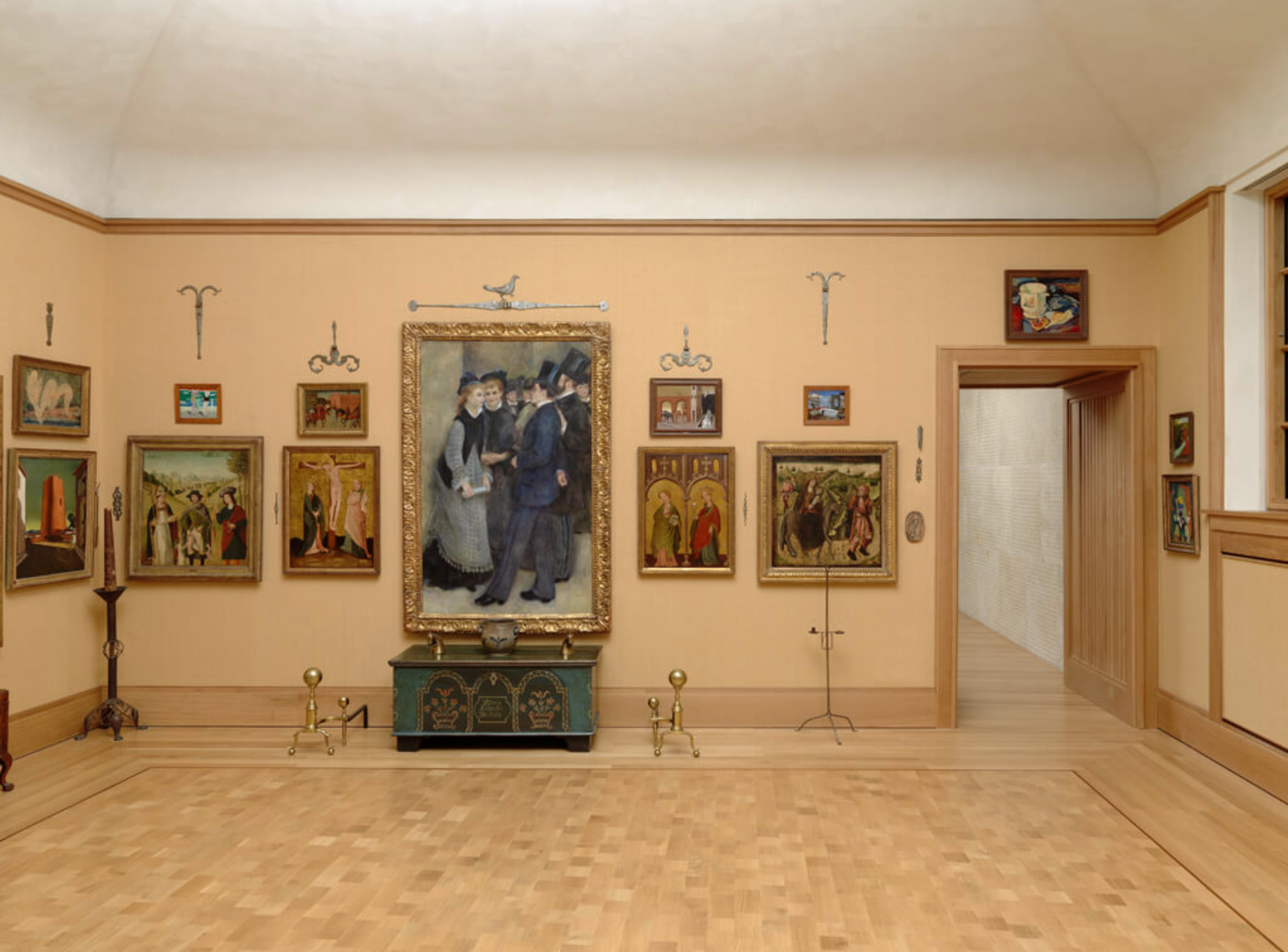Rx 50 / Bishop and Saints
Pray for us, that we may be relieved from all diseases of body and soul.
— novena to saint roch
This late medieval panel painting spotlights three saints who were believed to offer protection from the plague. At center, Saint Roch points out a scar from his own affliction, from which he recovered with the help of a faithful dog who licked his sores and brought him bread. A reference to the Eucharist, an angel vouchsafes this miracle by extending a hand in blessing. To the right is the early Christian martyr Saint Sebastian, depicted in two different chronological moments: in the foreground, we see him following his death holding a bow, symbolic of his martyrdom and state of immortality. In the distant hilly background, we witness his execution by a volley of arrows. The presence of a bishop to the left—probably Saint Remigius—suggests this panel may have been commissioned by church patrons, either to solicit the saints’ protection against plague or to express gratitude for their survival.
Sold in the nineteenth century without provenance, this panel’s origin is unknown. However, certain formal qualities informed by Flemish tradition, such as the extensive detail in the figures and landscape, date the work to the late fifteenth century. Likely displayed in a side chapel, aisle, or other highly visible public location, the votive panel served as a devotional aide for churchgoers.
At the Barnes, this relatively diminutive painting hangs in gallery 23, the final ensemble viewers experience before exiting the Foundation. Anchored by a Renoir and flanked by smaller paintings by Italian artist Giorgio Di Chirico and Philadelphia painter Angelo Pinto, the ensemble juxtaposes modernist and post-Byzantine religious works. The surrealist qualities of the modern pieces align with the supernatural elements of the medieval, in which two events from different historico-religious moments are conflated in a singular scene. At a time when literacy was rare and a resurgence of the bubonic plague was spreading across Europe, transmuting the stories of the plague saints in this way would have resonated with viewers.
reflections…
In the post-Byzantine church, religious art was a vehicle to bear witness to the burdens of the world and a means to navigate one’s own suffering. The viewing experience was both cathartic and didactic, a demonstration that faith could be protective and restorative in illness and crisis. In moments of uncertainty, the arts similarly render visible the powerful forces that we faithfully hold to be protective. Like the saints in this panel, the arts function as an intercessor of sorts, mediating between despair and hope, the intimate and universal, particularly when scientific facts feel obscure and statistics too impersonal.
As we transition into a post-pandemic reality, one less marked by disease and fear, how can the arts commemorate the extraordinary grief carried by some and the transformation likely experienced by all of us? How can the arts remain a means to navigate a new normal and help us collectively re-enter society? As depicted in this panel from plagues past, in what ways can the arts move us forward in hope, however marked we may be by scars and loss? How can the arts give representation to otherwise invisible struggles and, in so doing, help us heal?
sources
Conversation with Amy Gillette, Ph.D. 3 June 2021.
“Unidentified artist Bishop Saint, Saint Roch, and Saint Sebastian.” (2021). Barnes Foundation. https://collection.barnesfoundation.org/objects/5459/Bishop-Saint-Saint-Roch-and-Saint-Sebastian/.
Yoshikawa NK. Holy medicine and diseases of the soul: Henry of Lancaster and Le livre de seyntz medicines. Med Hist. 2009;53(3):397-414. doi:10.1017/s0025727300003999.








